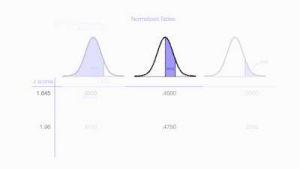

Note that these scores are clearly not normally distributed. This pattern is known as a uniform distribution and we typically see this when we roll a die a lot of times: numbers 1 through 6 are equally likely to come up. The histogram confirms that scores range from 1 through 6 and each of these scores occurs about equally frequently. However, we'll gain much more insight into these scores by inspecting their histogram as shown below. Scores - HistogramĪ quick peek at some of our 100 scores on our first IQ test shows a minimum of 1 and a maximum of 6. What we see here is that standardizing scores facilitates the interpretation of a single test score. However, if my score of 5 corresponds to a z-score of 0.91, you'll know it was pretty good: it's roughly a standard deviation higher than the average (which is always zero for z-scores). So is that good or bad? At this point, there's no way of telling because we don't know what people typically score on this test.

This standard is a mean of zero and a standard deviation of 1.Ĭontrary to what many people believe, z-scores are not necessarily normally distributed.Ī group of 100 people took some IQ test.

Z-scores are also known as standardized scores they are scores (or data values) that have been given a common standard. Z-Scores – What and Why? By Ruben Geert van den Berg under Statistics A-Z & T-Tests


 0 kommentar(er)
0 kommentar(er)
